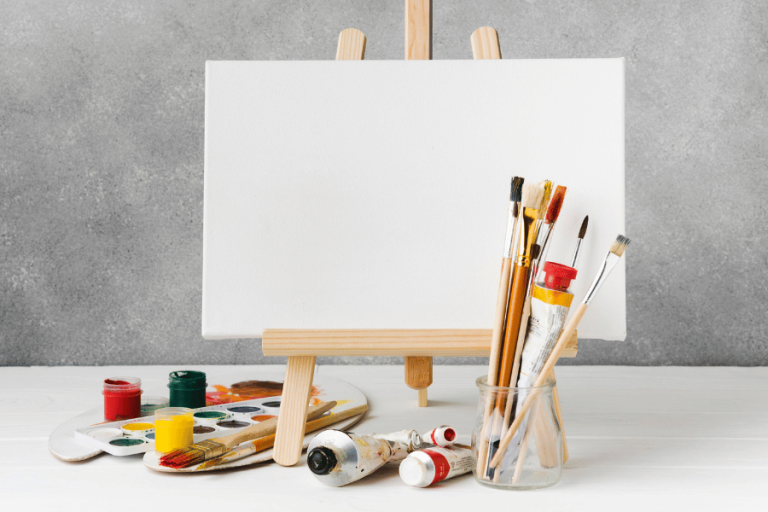
What does Bob Ross use to prime his canvas?
Very beginning, Bob Ross prime his canvas. For priming canvas Bob Ross uses gesso. He uses 2 or 3 layers of gesso to ensure the canvas is properly ready.
In this article, I will explain the following:
- Bob Ross uses gesso, alternative
- How to apply gesso
- Some tricks and tips.
In other articles I already explained the:
What does Bob Ross use gesso for? Alternative?
Bob Ross uses his own brand gesso. There are some good alternatives there.
| Grade | Note | |
| Bob Ross R62GESSO-50 White Gesso | Artistic and Bob Ross brand | Bob Ross brand product |
| Liquitex BASICS Gesso Surface Prep Medium | Artistic | Popular gesso |
| U.S. Art Supply White Gesso Acrylic Medium | Artistic | Popular gesso in the art world, you will get good results |
| Dina Wakley Media Gesso 4oz Jar, White | Artistic | Cheap one in artist grade, but good product |
| Prima Marketing 961442 Art Basics Heavy Gesso | Artistic | It is also a good product |
How to apply gesso?
Applying gesso is an important part and very easy to apply. Beginners can easily apply gesso on canvas.
You need:
- A brush (foam brush recommended) or paint roller.
- Gesso(mix white with a small amount of black gesso recommended).
- 240 fine grit sandpaper (for sand between gesso layer)
- One-inch brush to remove extra gesso from the canvas.
Necessary materials…
| Material type | Grade | Note | |
| US Art Supply 2 inch Foam Sponge Paint Brush | Foam Sponge Paint Brush | Student | Great for applying gesso |
| 3M Pro-Pak Garnet Sanding, 150A-Grit | Sandpaper | Recommended for canvas preparation |
How to apply?
Step 1. preparation: Take white gesso and a small amount of black gesso on a paint plate. Then mix it properly. White gesso with black gesso mixed helps you identify where you miss applying gesso and other issues.
Step 2. Apply: Now apply the prepared gesso on the canvas. Use a foam brush or roller and apply the gesso to all the areas on the canvas. You can easily identify issues and the spot where gesso is not properly applied. Fix the area.
Step 3. Check the thickness: The gesso layer should be very thin. You can easily identify the thickness with your fingers. Touch your five fingers in five areas bottom, upper, left, right, and middle of the canvas. If you think the canvas is watery, use a 1-inch clean brush, apply it on the canvas, and remove the watery effect.
Step 4. Dry and more coats if possible: Give it time to dry. The canvas will be dry within 30-60 minutes, then lightly sand the gesso with 240 fine grit sandpaper. It will make the gesso layer more smooth. Again apply the 2nd coat following the same method. If it needs to, apply a 3ed coat also.
Now your canvas is properly prime, next apply the liquid white or black to make the canvas wet and ready for paint. You know we are following wet on wet technique, so liquid white is an important part.
In this article, I explained how to apply liquid white on gesso-primed canvas.
What happens if you don’t use gesso?
Gesso gives more holding ability on canvas. After applying gesso, when you touch it, you will feel a chalk effect which is the grip. And apply the gesso background makes the painting dry faster.
If you do not apply gesso on canvas as a primer, the canvas can not get enough ability to hold paint. There can be a chance to peel off the paint when dry. Liquid white makes the canvas wet and dry slower. Without gesso, it takes a lot of days to dry.
Do I need to apply primer if I’m painting white?
Primers come to make the surface smooth, fill the gap, and create a base layer. All white paint is not for this. Even if the surface is not ready, paint can be peeled off when dry, or the pros surface can absorb the paint.